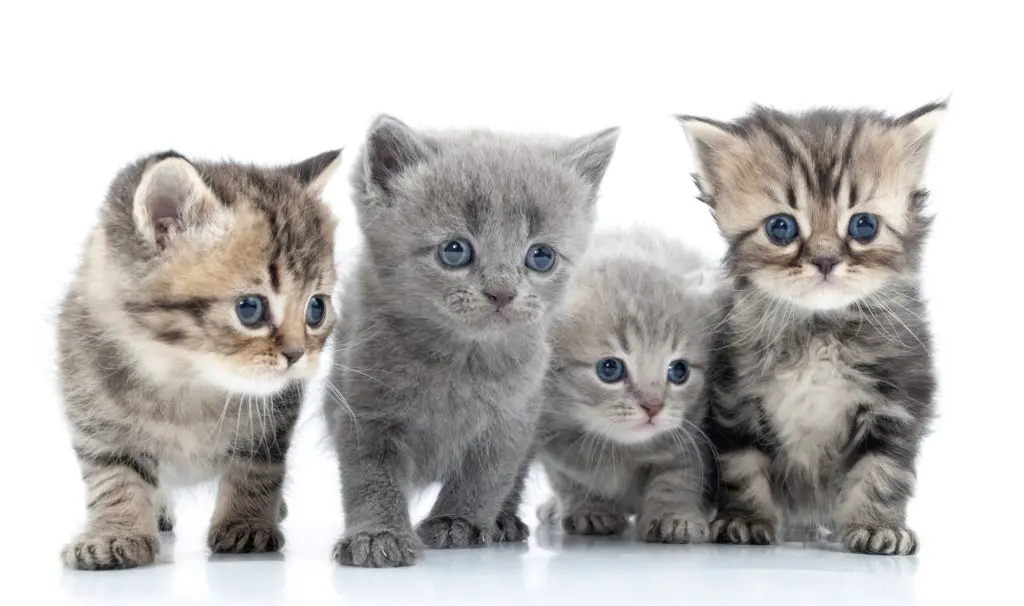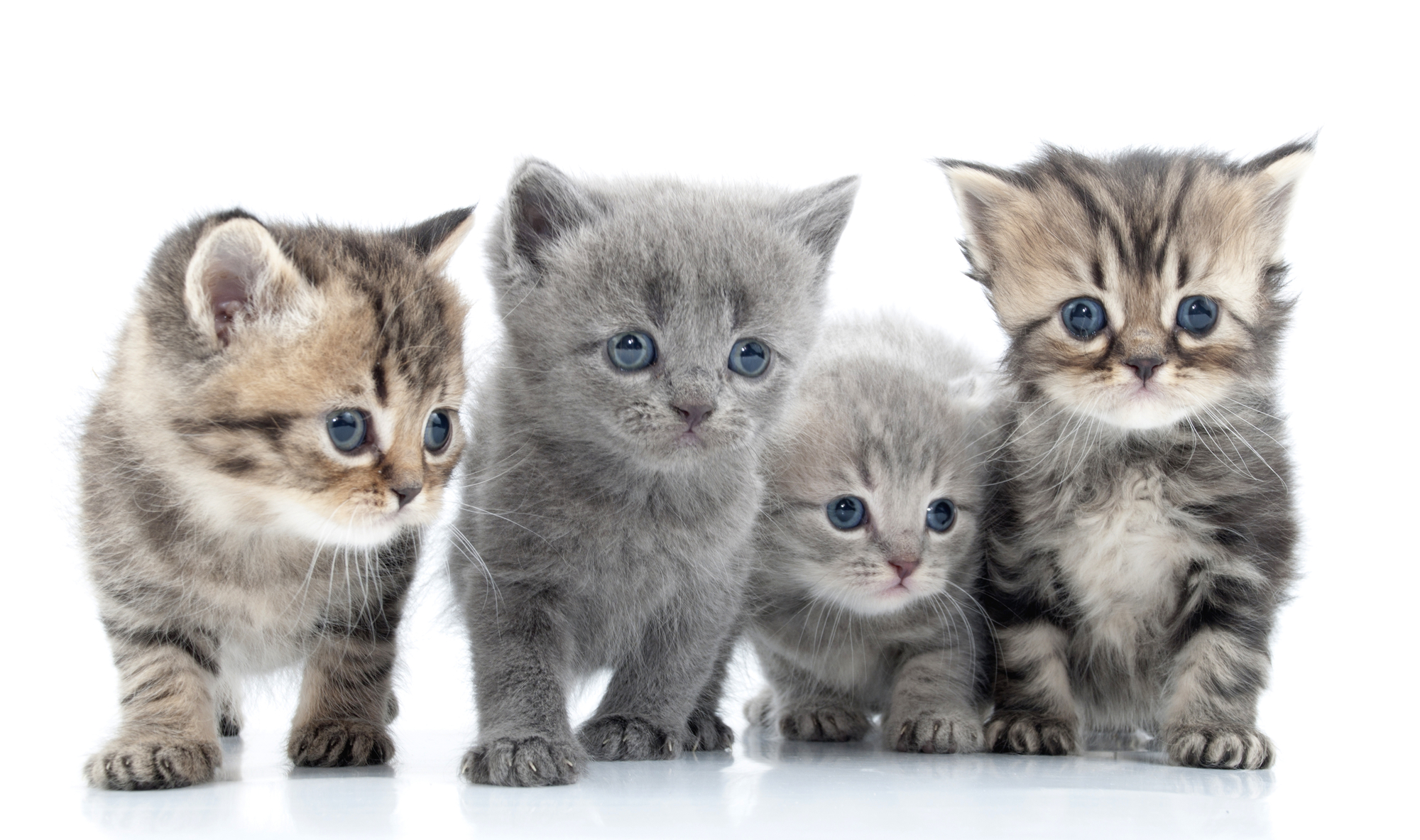Watching the life cycle of your little kitty as they grow into a majestic ball of fluff is very rewarding. There are so many memories, and it feels like it goes by so fast. Knowing the answer to when do cats stop growing is a good first step to learning to appreciate this time better.
You’ll also learn a little bit more about your cats, the differences between breeds, and what to expect from your furbaby. Knowing the stages of growth will also let you get an idea of what’s normal and what might be cause for concern. If you want to know more about how cats grow, read our guide below.

Contents
Kittens
Your kitten will grow the fastest from the day it’s born until it turns six months old. It’ll put on weight quickly too during this stage in its life cycle, as much as half a pound a week. They’ll start as a small and pudgy bundle of cuteness and develop their more pronounced feline features over that period.
They’ll be very active and playful during this period, not to mention curious. Socialization is crucial to a cat’s growth, so engage and play with your cat. You’ll have a harder time training fully grown cats, but it is possible.
While your kittens are growing and exploring the world, watch out for them. Their bones are still quite small and fragile, and their baby teeth are still very sharp. At the ten-week mark, they’ll start to replace their baby teeth, and at six months, they should have a full adult set.
The next question becomes when do cats stop growing in size?
Teenagers
From around six months to a year will be your cat’s adolescent stage. Their overall growth will slow down here, and you’ll be able to transition them to adult cat food. There are some breed considerations, but in general, most cats will be ready to switch off of kitten food by the time they are two.
Proper diet and nutrition are very important for a cat’s growth and wellbeing. This is extra true in the early stages. For example, a 10lb cat needs 200 calories a day to grow and be healthy.
Many typical household cats range from 10 to 22lbs when grown, with some like Maine Coons coming in at 25lbs. Cats reach sexual maturity at around six months, although some can take as long as eight. If you’re planning to do the responsible thing and get your male cats neutered or female cats spayed, now might be the time to do it.
Your cats will also be more likely to act out and misbehave during their teenage stage. A common practice for cats, especially male cats, is spraying indoors. Some cats might look lean or too lanky, but that’s normal. Try not to worry about it, as many different breeds take longer to grow.
Tabby cats can take less than two years to grow, whereas Main Coons are as slow as three or four. They might look tiny at the end of their first year, but they’ll fill out their frame soon enough.
Early and Mid-Adulthood
Those still wondering the answer to “when do cats stop growing” will find their answer here. The vast majority of small cats will stop growing at between 12-18 months. There are exceptions, like the Ragdoll cat, which can still grow until they’re four or five.
Some larger breeds will take three or four years to finish growing. The one to three year period is early adulthood, the equivalent to a human’s late teens or early 20s. They’ll likely look a little lean and still have some filling out to do, but their frame is pretty much set.
The three to six year period is the mid-life stage. Your cat will be in its prime and at the peak of its feline powers. Many cats will grow to be around 8-12 inches tall and under 18 inches long when full size. Some breeds will grow as tall as 19 inches or 26 inches long, so there is lots of variation.
Gender will affect things too. So when do male cats stop growing, and is it different from females? In most cases, a male cat will grow larger and more slowly than a female cat.
On average, the male might be two pounds heavier too. This means a female cat is more likely to stop growing first, often around the 18 months to two years. As with all things, there are plenty of exceptions.
One thing that tends to be consistent is that male cats take longer to finish growing.
Maturity and the Golden Years
From seven to 10 years, your pet cats will be late middle age, the equivalent of a human in their 40s. You’ll notice their energy levels start to dip as they spend more time chilling and sleeping. This laziness often won’t dull their appetite, though, so they can pack on the pounds.
A growing food belly is the only type of growing your cat will do at this stage. Some owners will need to put their cats on strict diets and exercise routines to avoid health issues. Around 11-14 is when your cat becomes a senior citizen.
At this point, you’ll have to contend with diseases and conditions associated with old age. These can include arthritis, among others, and you’ll often notice your cat slow down. By the time they hit 15, their best years are behind them.
They’ll be pretty much geriatric, with weight loss, loss of appetite, low energy, and health conditions ruling their day-to-day. The average lifespan of a cat ranges from 12 to 18, so you don’t have to say goodbye yet. That said, expecting your 16-year-old kitty to be as full of life and vigor as when they were five is unlikely.
When Do Cats Stop Growing and Their Life Cycle
No two cats are alike, either in personality or how they grow. That said, there are overlaps for when do cats stop growing. When it comes to the life cycle of different cat breeds, most cats reach sexual maturity at six months and will stop growing within two to four years.
Females grow quicker, stop sooner, and end up a little smaller than male cats. Do you want to learn more about your feline friend? Check out our other cat blogs to learn more about cat behavior.



